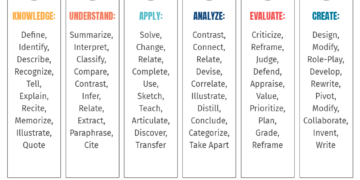Overview:
Logan has taught high school and university-level English for 13 years, with courses on everything from writing to activism to superheroes. He also illustrates inspirational cartoons and graphic essays and is the creator of AsMuchGood.com. In his spare time he enjoys Indian food, the Chicago Cubs, national parks, and occasionally dressing up like Batman.
The author and Anthony, a teacher and headmaster in the Kiryandongo district of Uganda.
An elephant had waltzed through Anthony’s schoolground the morning of the day I interviewed him.
Turns out that’s a thing teachers deal with in rural Uganda. It’s not normal, but not entirely rare either—an elephant will wander through the grounds, calf in tow, looking for some maize or sugarcane to munch on. The kids squeal with excitement, leap from their benches to give chase, then enjoy the show as the world’s largest land mammal wreaks havoc on nearby potato and tobacco fields.
“Yes, it is difficult to keep the children’s attention after an elephant comes,” one of the teachers says. “It is hard for them to stay focused for the remainder of the day.”
I nod as I hear this, scrambling for any shred of shared experience. It’s an exercise in futility.
Remember when Pokemon Go came out, how hard it was to keep students focused that year?
Yep, that’s the best I can do. Only, instead of Charizard or Caterpie emerging virtually from a spawn point in the hallway outside, Headmaster Anthony and his staff get to deal with actual 12,000 pound African elephants distracting their students.
He sits across from me on a rickety wooden bench, blue blazer on top of a sky-blue polo. His smile comes easy, but his eyes have wrinkles of care about them—it’s the look of a man who has seen quite a bit, but has good humor about it.
And elephants aren’t the only challenge teachers face in the Kiryandongo district of Uganda. It’s a remote, beautiful area north of capital city Kampala where baboon families lounge on the roads, villages typically have six to twelve different languages represented, and elephants drop by local elementaries to say hi.
Water is a big one—specifically, the lack of. Collecting it often takes hours a day, and many girls are yanked out of school in their youth so they can collect it for their families. Most never make it back. Water is also the reason I’m even talking to Anthony in the first place.
I’m in Uganda as a guest with charity: water, a phenomenal non-profit trying to bring clean water to people who don’t have it. There are still over 700 million of them. We’re at Anthony’s school so charity: water’s creative team can capture the story of one of his students. I wasn’t needed, so I’d seized the opportunity to talk with a fellow teacher on the other side of the world.
Another challenge Anthony and his staff face is absenteeism caused by sickness. It is common for kids to miss school due to diarrhea, typhoid, dysentery, and other diseases. These can typically be traced back to poor hygiene and, of course, bad water.
Like elephants and lack of clean water, many of his teaching challenges are completely unrelatable to me. What surprises me most, however, is how many of them are.
“Yes, the pay is not very good. And sometimes we do not receive our pay for many months,” he says in his heavy, rich accent. “We also experience difficulty because we have a lack of resources.”
I smile.
He goes on to lament the state of the school building, the overall lack of supplies, and the indifference of parents. Though I’m sitting in a cozy, spartan room with a dirt floor in Uganda, for that moment I could be in any teacher lounge in any school in any state in America.
He gives me a tour of the school. It’s a simple, rectangular building about the size of your average suburban Starbucks. The floors are dirt and the walls are constructed out of rough, reddish-orange bricks. Cream-colored mortar squishes out between those bricks, like a red Oreo cookie stepped on by a Kindergartener.
Also, the building offers a beautiful view of the vast, Ugandan sky. On account of not having a roof.
“Not having a roof makes the teaching difficult,” he tells me later. “When it rains we sometimes have to cancel classes. Our tarp doesn’t cover very much.”
He points to the tattered brown tarp overhead. With some amusement—and a dash of shame—I remember my biggest facility-related gripe from the previous schoolyear (the one I bellyached about to whomever would listen): someone kept swiping the dry erase markers out of my room.
Until funds are obtained to finish the roof—a simple construction project involving basic lumber and corrugated sheet metal—classes are taught in a long, makeshift shed. There are four different classrooms partitioned by thin, brittle pieces of plywood that double as a chalkboards. One side doesn’t have a wall at all. In a later conversation, four students tell me how hard it is to hear their teacher over the din of the other classes.
Suddenly my own classroom with the janky overhead and purloined dry erase markers looks like Formal Hall at Oxford University.
After the tour we return to our original room, my mind whirling with the contrast of familiar and unfamiliar in Anthony’s situation. Low pay, indifferent parents, and a dearth of resources I could relate to; elephants, missing roofs, and drop outs caused by lack of water—not so much.
So I ask him THE question. You know the one. It’s the one we’ve asked ourselves time and time again, the one that stares us in the face every time we see that measly paycheck or cough up our own dough for supplies or deal with an irate parent.
“Why do you teach, then?”
Anthony pauses. Not because he doesn’t know the answer, but because he’s looking for the best way to explain it.
“Because if you can inspire your students, you can make their lives better. And if you can make their lives better, it’s the best way to make your country better.”
And in that moment, I knew I had more in common with Anthony than I did with most people in my life.
I hugged him on the spot.
Anthony had verbalized perfectly the impulse that had brought me to teaching, and the one that keeps me in it despite all the challenges. I teach because I want to make my student’s lives better. If I can do that, I can make my community better.
And through that, I get to make the world better.
Isn’t that why most of us teach? Those of us who are here by choice, who stay in this profession despite all the ridiculousness, headache, and heartache? We teach because it gives us the opportunity to make the world better.
Nelson Mandela said as much: “Education is the most powerful weapon which you can use to change the world.” While many in our cynical age might consider this sentiment twee and overly-saccharine naivete, I still subscribe to it whole-heartedly.
And so do many of our sisters and brothers around the world.
Sure, there are the endless prep hours, endless grading, endless meetings and conferences and email reply-alls from Kathy in the main office. There are the helicopter parents and absentee parents, the public antipathy and public apathy. Not to mention the salaries that make old college friends chuckle and offer to pay for lunch.
But there are also the eureka moments, the thank-yous, the “your class changed my life” moments, and the opportunity to witness that particular look in a student’s eye when you’ve stretched their mind, opened a new horizon, and you both know they’ll never look at the world the same again.
And, above all, there’s the motivation Anthony so perfectly verbalized: teaching affords us the opportunity to make our community a better place.
That’s the impulse that brought many of us here. There’s a kinship between all who feel it, and that kinship transcends paltry boundaries like geographical borders.
Anthony and I talked a while longer. We bonded over shared teaching experiences. Then I thanked him and left. Even before I said goodbye, my mind was working out the details of how I could help him. The kinship was in effect. When you see education as the best way to improve the world, someone else’s classroom becomes your classroom. Helping one class benefits everyone, even if that school is on the other side of the globe.
I knew once I returned home that I could send up the teacher batsignal for Anthony and his students and other teachers would step up. We could raise enough money to get them a roof. We may not be wealthy, we teachers—but we look out for each other. We’re like carpenter ants. Or a mafia family, only with dry erase markers instead of bullets.
Sure enough, when I returned home and told Anthony’s story to my mother—a 25-year veteran of secondary ed—her eyes darted for the checkbook before I’d even finished.
“How much do they need?”
I’ve had other donation offers for Anthony, just by telling his story.
Right now charity: water is looking into local NGO’s that can take charge of getting Anthony’s students a roof on their rectangular building, the one with the rough bricks and the creamy white mortar squishing out like a smooshed Oreo. Finding the right group is more difficult than you’d think, as factors like possible corruption, quality of construction, and maintenance come into play.
The most beautiful part of this story for me, however, is knowing that raising the money wouldn’t be a significant obstacle—even with a group as cash-strapped as we are. Teachers look out for teachers, because we’re driven by the same motivation.
And that help has taken many forms for me over my 13 years of teaching: veterans taking me under their wing, advice, supplies, lesson ideas, a listening ear, amateur therapy, and even once, a check for $10,000 to help my fledgling family (that’s a whole other story). However, I’ve learned that help is as dependable and reliable as students not reading all the instructions or getting me sick during cold season.
As Anthony showed me, there’s a kinship among teachers that transcends silly human constructs like nationality, race, and geographic borders. It’s shared by every person brought to this profession with the desire to make the world a better place.
Even if most of us will never know what it’s like to have an elephant waltz across our schoolgrounds in the middle of class.

Author’s Note: For anyone who might want to help out Anthony, your generosity is greatly appreciated. As mentioned, finding local groups to ethically oversee construction is a complex process. In the meantime, I strongly recommend sending your donation to charity: water, as their clean water projects around the world will have an even bigger impact on global education. I’ve seen their work first hand, and it’s incredible. For more info, go here: charitywater.org.




















